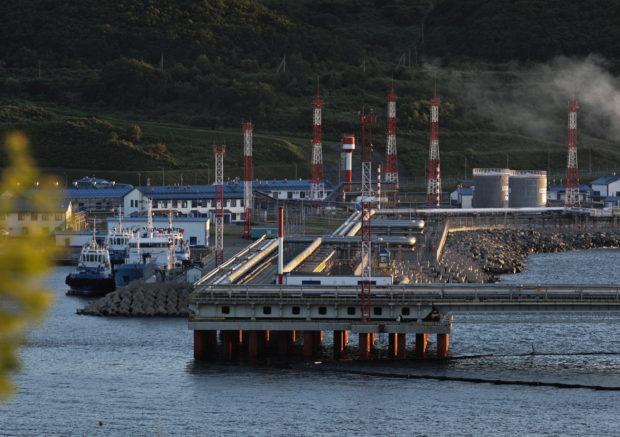
A view shows the crude oil terminal Kozmino on the shore of Nakhodka Bay near the port city of Nakhodka, Russia August 12, 2022. REUTERS/Tatiana Meel
Group of Seven finance ministers agreed on Friday to impose a price cap on Russian oil aimed at slashing revenues for Moscow’s war in Ukraine while keeping crude flowing to avoid price spikes, but their statement left out key details of the plan.
The ministers from the club of wealthy industrial democracies confirmed their commitment to the plan after a virtual meeting. They said, however, that the per-barrel level of the price cap would be determined later “based on a range of technical inputs” to be agreed by the coalition of countries implementing it.
“Today we confirm our joint political intention to finalize and implement a comprehensive prohibition of services which enable maritime transportation of Russian-origin crude oil and petroleum products globally,” the G7 ministers said.
The provision of maritime transportation services, including insurance and finance, would be allowed only if the Russian oil cargoes are purchased at or below the price level “determined by the broad coalition of countries adhering to and implementing the price cap.”
The ministers said they would work to finalize the details, through their own domestic processes, aiming to align it with the start of European Union sanctions that will ban Russian oil imports into the bloc starting in December.
The G7 consists of Britain, Canada, France, Germany, Italy, Japan and the United States.
The ministers said they would seek a broader coalition of oil importing countries to purchase Russian crude and petroleum products only at or below the price cap, and will invite their input into the plan.
Some G7 officials have expressed concerns that the price cap would not be successful without participation of major importers such as China and India, which have sharply increased their purchases of Russian crude since Moscow launched its invasion in February. But others have said China and India have expressed interest in buying Russian oil at an even lower price in line with the cap.
Enforcing the cap would rely heavily on denying London-brokered shipping insurance, which covers about 95% of the world’s tanker fleet, and finance to cargoes priced above the cap. But analysts say that alternatives can be found to circumvent the cap and market forces could render it ineffective
Despite Russia’s falling oil export volumes, its oil export revenue in June increased by $700 million from May due to prices pushed higher by its war in Ukraine, the International Energy Agency said last month.
The G7 finance ministers’ statement follows up on their leaders’ decision in June to explore the cap, a move Moscow says it will not abide by and can thwart by shipping oil to states not obeying the price ceiling.
Pricing concerns
The U.S. Treasury has raised concerns that the EU embargo could set off a scramble for alternative supplies, spiking global crude prices to as much as $140 a barrel, and it has been promoting the price cap since May as a way to keep Russian crude flowing.
Russian oil prices have risen in anticipation of the EU embargo, with Urals crude trading at an $18-to-$25 per barrel discount to benchmark Brent crude, down from a $30-to-$40 discount earlier this year.